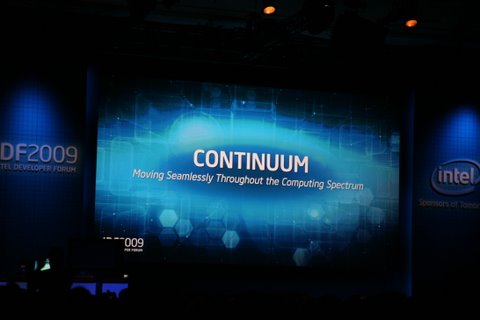Renewed optimism

IDF keynotes kicked off this morning with Paul Otellini taking to the stage to discuss everything from Atom to Moblin to shrinking process technology beyond 32nm and the future development of the mobile space. Well, we should say ‘almost everything', as Otellini only mentioned the much-anticipated Larrabee VPU once, and that was in passing. Que lastima! WIMAX was also seemingly kicked to the curb, or at least brushed under the big blue carpet by the Intel CEO, in a keynote many felt lacked a certain "je ne sais quoi".
Vice president Sean Maloney introduced his CEO by saying the firm was feeling a "real sense of optimism and innovation" this year and that although the world had not completely emerged from the economic crisis, "so far, so better."
Otellini did his best to run with the optimistic vibe, announcing that an incredible transformation was taking place in the technology industry with "broad implications" for the future. "I think the PC market is more than resilient," he said, adding somewhat starry eyed, "it's amazing"
Computing continuum
Under the "spectrum of computing - computing continuum" banner, Otellini went on to say that whilst the firm was still ploughing ahead with Moore's law, IDF was changing from what used to be a PC event to one with much broader boundaries.
This year only 20 per cent of IDF attendees hail from the typical crowd of OEM/ODM reps, whilst new attendees run the gamut from energy sector employees, to members of the financial services and even healthcare professionals. Somewhat surprisingly, 40 per cent of the schedules speakers at this year's event are actually non Intel, diluting the chip firm's presence a tad.
But no Intel event would be complete without mentioning Moore's law, and Otellini didn't leave it long before showing the audience a slide which showed how the ‘law' had evolved from 180nm in 1999 to 32nm in 2009, with Otellini noting "we're not stopping at 32nm." Indeed, he went on to announce that the firm was already working on 22nm and was on track for production in the second half of 2011.









